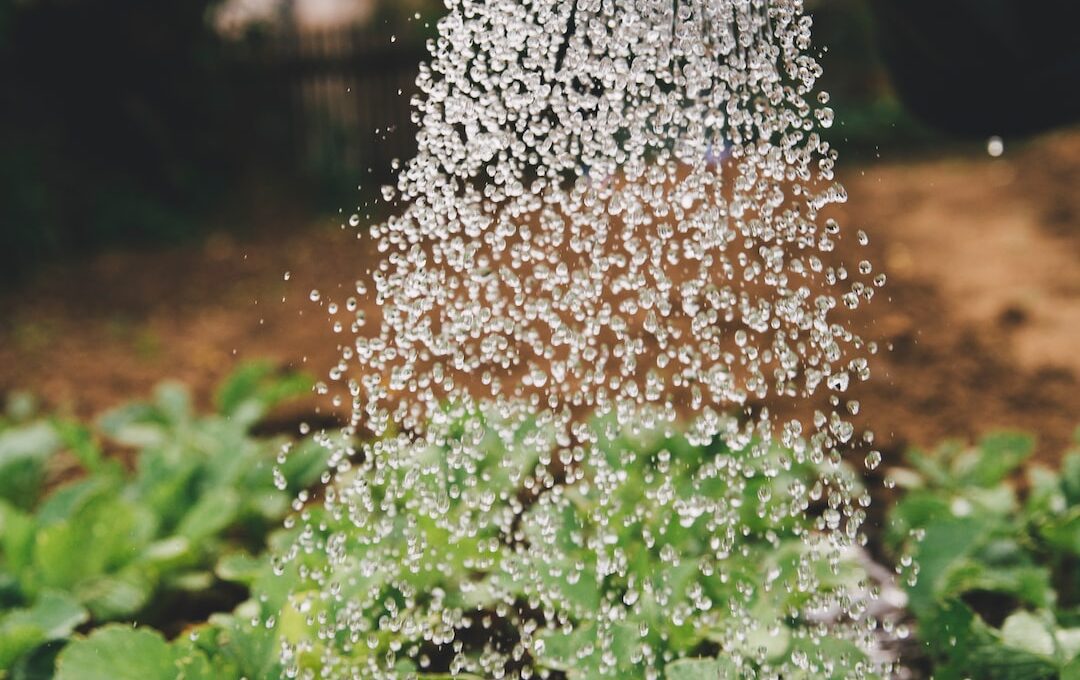Are you unsure about how often to water your viburnum plants? It’s important to understand the watering needs of viburnum to ensure their health and vitality. In this article, we will guide you through establishing a watering schedule and provide techniques for both young and mature viburnum plants. We will also share watering tips specific to different viburnum varieties. Remember, proper watering is crucial for the safety and well-being of your plants.
By following these guidelines, you can ensure that your viburnum plants receive the right amount of water to thrive. Additionally, we will discuss other factors to consider when watering your viburnum, such as soil type and weather conditions.
Let’s dive in and discover how to keep your viburnum plants hydrated and happy!
Quick Summary
- Viburnums prefer moist soil but not waterlogged conditions.
- Water deeply once a week during the growing season to encourage root growth.
- Adjust watering schedule based on soil type, weather conditions, and viburnum age.
- Avoid overwatering to prevent root rot and other issues.
Understand the Watering Needs of Viburnum
You’ll be amazed at how often you should water your viburnum to keep it happy and thriving! Watering frequency is crucial for the health of your viburnum. These plants prefer moist soil, but they don’t like to sit in waterlogged conditions. It’s important to find the right balance.
To determine the watering frequency, you need to consider several factors. The type of soil, weather conditions, and the age of your viburnum all play a role. Generally, viburnums should be watered deeply once a week during the growing season. This allows the water to penetrate the root zone and encourages the roots to grow deep into the soil.
However, it’s essential to pay attention to signs of overwatering. If the leaves start to turn yellow or develop black spots, it may indicate that you’re watering too frequently. Overwatering can lead to root rot, which can be detrimental to the plant’s health. Make sure the soil is well-draining and never let the plant sit in standing water.
Watering frequency is crucial for the well-being of your viburnum. By finding the right balance and paying attention to signs of overwatering, you can ensure that your plant remains healthy and thriving.
Establish a Watering Schedule
Maintaining a consistent watering schedule for your viburnum is essential for its healthy growth and vibrant appearance. By establishing a watering routine, you can ensure that your viburnum receives the optimal moisture levels it needs to thrive.
To determine the optimal moisture levels, you should consider the specific needs of your viburnum variety, as different types may have slightly different requirements. Generally, viburnums prefer moist soil but not waterlogged conditions. One way to check if your viburnum needs watering is by feeling the top inch of soil. If it feels dry, it’s time to water.
When watering, it’s important to provide a deep soak rather than frequent shallow watering. This encourages the roots to grow deeper, making the plant more resilient to drought conditions. Watering in the morning is ideal as it allows the foliage to dry before nightfall, reducing the risk of fungal diseases.
Remember to adjust your watering schedule based on the weather conditions. During hot, dry spells, your viburnum may require more frequent watering. On the other hand, during cooler and wetter periods, you may need to reduce the frequency to prevent overwatering.
By following these guidelines, you can establish a watering routine that’ll keep your viburnum healthy and flourishing.
Watering Techniques for Young Viburnum Plants
To ensure the successful establishment of young viburnum plants, it’s important to provide consistent moisture. You can achieve this by using a drip irrigation system or a soaker hose, which’ll deliver water directly to the roots.
Another effective technique is to mulch around the base of the plants, as this’ll help retain moisture in the soil.
Provide consistent moisture during establishment
During the establishment phase, it’s important to ensure that your viburnum has a constant supply of moisture to help it thrive. Watering frequency is crucial, as young viburnum plants need consistent moisture to establish their root systems. However, it’s equally important to maintain proper drainage to prevent waterlogging, which can lead to root rot and other issues. To help you understand the importance of providing your viburnum with the right amount of water, refer to the table below:
| Watering Frequency | Proper Drainage |
|---|---|
| Regularly, but not excessively | Ensure soil is well-draining |
| Keep soil consistently damp | Avoid waterlogging |
| Water deeply, but infrequently | Provide adequate drainage holes |
| Monitor soil moisture levels | Use a well-draining potting mix |
By following these watering techniques, you can ensure that your viburnum receives the consistent moisture it needs without compromising its safety and overall health.
Use a drip irrigation system or soaker hose
Consider utilizing a drip irrigation system or soaker hose for optimal watering efficiency and to ensure that your viburnum receives the necessary moisture while conserving water. By using these methods, you can enjoy the following benefits:
-
Consistent Moisture: Drip irrigation provides a slow and steady supply of water directly to the roots of your viburnum, preventing overwatering or underwatering.
-
Water Conservation: Drip irrigation and soaker hoses deliver water directly to the plants’ root zone, minimizing evaporation and water waste.
-
Disease Prevention: By avoiding overhead watering, drip irrigation and soaker hoses help prevent foliage diseases caused by wet leaves.
Using a drip irrigation system or soaker hose not only simplifies the watering process but also ensures that your viburnum receives the right amount of moisture while promoting water conservation and minimizing the risk of diseases.
So, make the smart choice and give your viburnum the care it deserves.
Mulch around the base to retain moisture
Enhance moisture retention and protect your viburnum by mulching around the base. Mulching is a simple yet effective technique that helps in retaining moisture and providing numerous benefits to your plants. By adding a layer of organic mulch around the base of your viburnum, you create a protective barrier that helps to lock in moisture and prevent evaporation. This is especially important during dry periods or hot weather when water can quickly evaporate from the soil. The mulch also acts as an insulator, keeping the soil temperature stable and protecting the roots from extreme heat or cold. Additionally, mulching suppresses weed growth, which can compete with your viburnum for water and nutrients. Check out the table below to see the benefits of mulching:
| Benefits of Mulching |
|---|
| Retains moisture |
| Regulates soil temperature |
| Suppresses weed growth |
| Prevents soil erosion |
| Adds organic matter to soil |
By mulching around the base of your viburnum, you not only retain moisture but also provide a safer and healthier environment for your plants.
What is the Proper Watering Schedule for Bamboo Plants?
Knowing the proper watering schedule for bamboo plants is crucial for their health and growth. The frequency of watering bamboo depends on various factors, including the climate, soil type, and the size of the plant. Generally, it is best to keep the soil evenly moist without overwatering, as bamboo prefers a consistent level of moisture. Regularly check the soil moisture level and adjust the watering frequency accordingly to maintain a healthy watering bamboo routine.
Watering Techniques for Mature Viburnum Plants
To keep your mature viburnum plants thriving, it’s important to water them regularly. Watering frequency is crucial for their growth and overall health. The best watering practices for mature viburnum plants involve a careful balance of providing enough moisture without overwatering.
When it comes to watering frequency, it’s essential to consider the specific needs of your viburnum plants. Generally, they require watering once a week during the growing season. However, this can vary depending on factors such as climate, soil type, and plant size. It’s important to monitor the moisture levels in the soil and adjust your watering schedule accordingly.
When watering your mature viburnum plants, it’s crucial to do it deeply and thoroughly. This helps ensure that the water reaches the roots, where it’s needed the most. Avoid shallow watering as it can lead to shallow root growth and make your plants more susceptible to drought stress.
To maximize water retention, it’s beneficial to mulch around the base of your viburnum plants. This helps to regulate soil temperature and reduce evaporation, keeping the roots cool and moist. Apply a layer of organic mulch, such as wood chips or shredded bark, around the base of the plants, taking care to leave a small gap around the stem to prevent rot.
By following these watering techniques and practicing the best watering practices, you can help your mature viburnum plants thrive and stay healthy. Remember to adjust your watering schedule based on the specific needs of your plants and always monitor soil moisture levels to ensure they receive the right amount of water.
Watering Tips for Specific Viburnum Varieties
When it comes to watering your viburnum plants, it’s important to consider the specific water requirements of different species. Some varieties may prefer more moisture, while others may be more drought-tolerant. Additionally, it’s helpful to learn about the water preferences of popular cultivars to ensure you’re providing the right amount of water.
Lastly, don’t forget to research any special considerations for your specific variety, as some viburnum plants may have unique watering needs.
Consider the specific water requirements of different species
Make sure you’re aware of the specific water requirements of different species when watering your viburnum. Each variety has its own preferences when it comes to watering frequency and techniques.
Some viburnum species, like the Korean spice viburnum, prefer consistently moist soil, while others, like the arrowwood viburnum, can tolerate drier conditions. To ensure the health and safety of your viburnum, it’s important to understand these differences.
When watering, make sure to provide enough moisture to reach the root zone, but be cautious not to overwater, as this can lead to root rot. A general rule of thumb is to water deeply and infrequently, allowing the soil to dry out slightly between waterings.
Observing your viburnum closely will also help you determine its specific water needs and adjust accordingly.
Learn about the water preferences of popular cultivars
Now that you understand the importance of considering the specific water requirements of different viburnum species, let’s dive into learning about the water preferences of popular cultivars. Knowing the watering frequency and proper watering techniques for these cultivars will help ensure the health and safety of your viburnum plants.
Here are three key things to keep in mind:
-
Check the soil moisture: Before watering, always check the moisture level of the soil by sticking your finger about an inch deep into the ground. If it feels dry, it’s time to water.
-
Water deeply and infrequently: Instead of frequent shallow watering, it’s best to water deeply and less often. This encourages the roots to grow deeper and makes the plant more drought-tolerant.
-
Mulch and conserve moisture: Applying a layer of mulch around the base of the plant helps retain moisture and prevents weed growth. It also keeps the soil temperature regulated.
By following these watering tips, you can ensure your viburnum plants receive the proper hydration they need to thrive.
Research any special considerations for your specific variety
It’s important to research any special considerations for your specific variety of viburnum in order to ensure its optimal health and beauty. Different varieties of viburnum may have unique water preferences, so it’s crucial to understand the specific needs of your plant. Here are some key considerations to keep in mind when watering your viburnum:
-
Soil Moisture: Viburnums generally prefer well-draining soil. Make sure the soil is moist but not overly saturated. Overwatering can lead to root rot and other issues.
-
Watering Frequency: While viburnums generally require regular watering, the frequency may vary depending on the specific variety. Some varieties may need more water, especially during hot and dry periods, while others may tolerate drier conditions.
To help you understand the water preferences of your specific viburnum variety, refer to the table below:
| Variety | Watering Needs |
|---|---|
| Viburnum A | Moderate |
| Viburnum B | High |
| Viburnum C | Low |
| Viburnum D | Moderate |
Remember, proper research and understanding of your specific viburnum variety will ensure its optimal health and beauty.
Additional Factors to Consider
When caring for viburnum, don’t overlook the importance of considering additional factors that can greatly impact its watering needs. Watering frequency during drought and the effects of overwatering are two key factors to keep in mind.
During periods of drought, it’s crucial to adjust the watering frequency of your viburnum. These plants have deep root systems that allow them to tolerate dry conditions to some extent. However, prolonged drought can still stress them out. To ensure their optimal health, water your viburnum deeply and infrequently during dry spells. This will encourage the roots to grow deeper and become more resilient to drought conditions.
On the other hand, overwatering can be equally detrimental to your viburnum’s health. Excessive moisture can lead to root rot and other fungal diseases. It’s essential to ensure proper drainage and avoid waterlogged soil. To prevent overwatering, check the moisture level of the soil before watering. Stick your finger about an inch into the soil, and if it feels dry, it’s a sign that your viburnum needs watering.
By being mindful of these additional factors, you can ensure that your viburnum receives the right amount of water, even during challenging conditions. Remember, watering frequency during drought and avoiding overwatering are crucial for the overall health and well-being of your viburnum plant.
Frequently Asked Questions
Can Viburnum plants tolerate drought conditions?
Viburnum plants have moderate drought tolerance, but they still need regular watering to thrive. To ensure their health, water them consistently, especially during dry spells, to prevent stress and maintain their beauty.
How can I tell if my Viburnum plant is overwatered?
To prevent overwatering in viburnum plants, look for signs such as yellowing leaves, wilting, or root rot. Ensure proper drainage and water only when the top inch of soil is dry.
Can I use a sprinkler system to water my Viburnum plants?
Yes, you can use a sprinkler system to water your viburnum plants. However, keep in mind that sprinkler efficiency may vary. It’s important to consider alternative watering methods to ensure your plants receive adequate hydration and prevent overwatering.
Is it better to water Viburnum plants in the morning or evening?
It is better to water viburnum plants in the morning. Morning watering benefits include allowing the plant to dry throughout the day, reducing the risk of disease. Evening watering can lead to prolonged moisture, increasing the risk of fungal problems.
What should I do if my Viburnum plant’s leaves are turning yellow and droopy?
To care for your viburnum plant and address yellow and droopy leaves, check if the plant is receiving enough water, sunlight, or if it has pest or disease issues. Proper watering and pest control can help your plant thrive.
Conclusion
To ensure the health and vitality of your viburnum plants, it’s important to water them properly. By understanding their watering needs and establishing a watering schedule, you can provide the right amount of moisture. Remember to adjust watering techniques as the plants grow and mature.
It’s also important to consider the specific variety of viburnum you have, as different types may have slightly different watering requirements. Finally, take into account additional factors such as weather conditions and soil moisture levels to keep your viburnum plants thriving.
Happy gardening!









